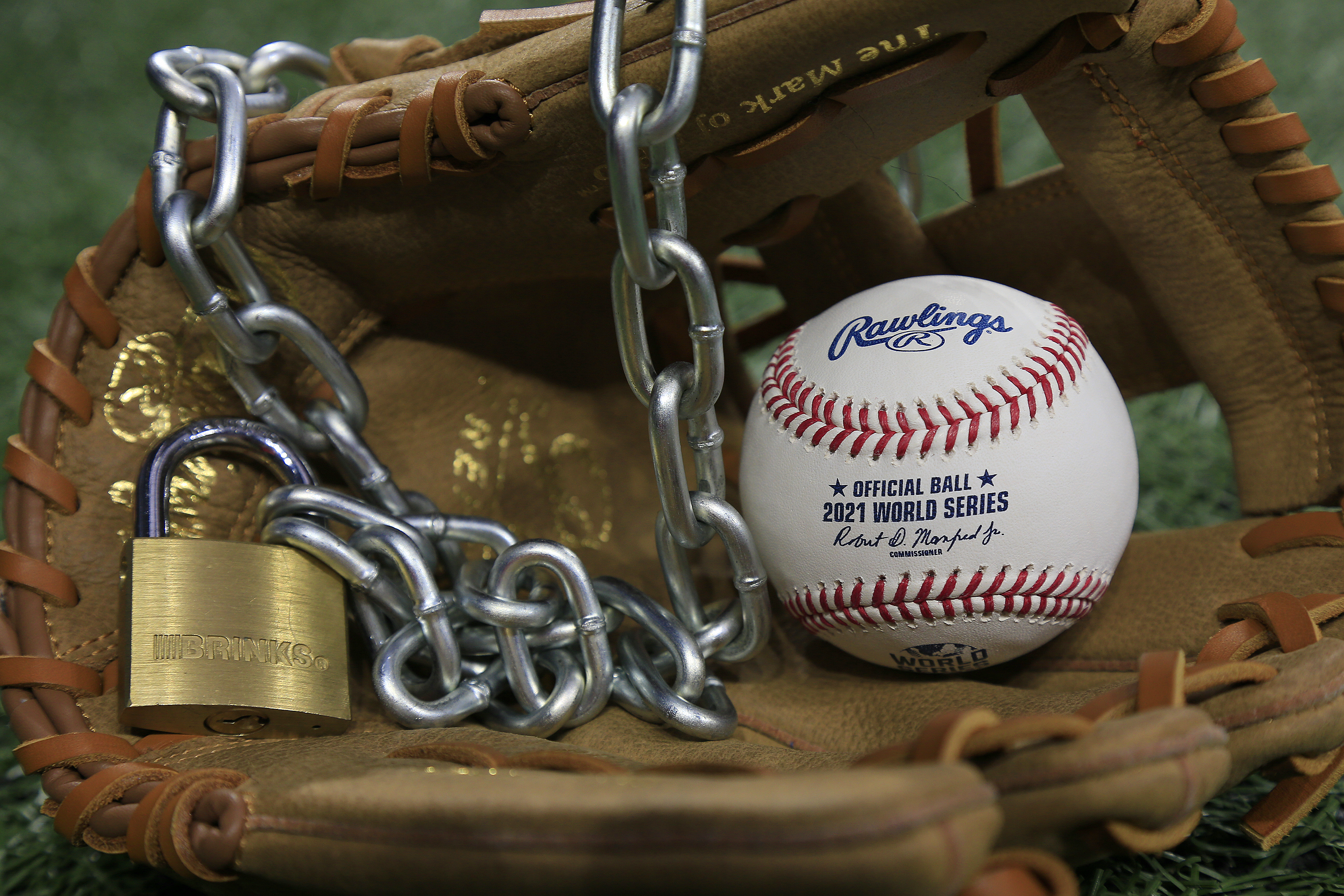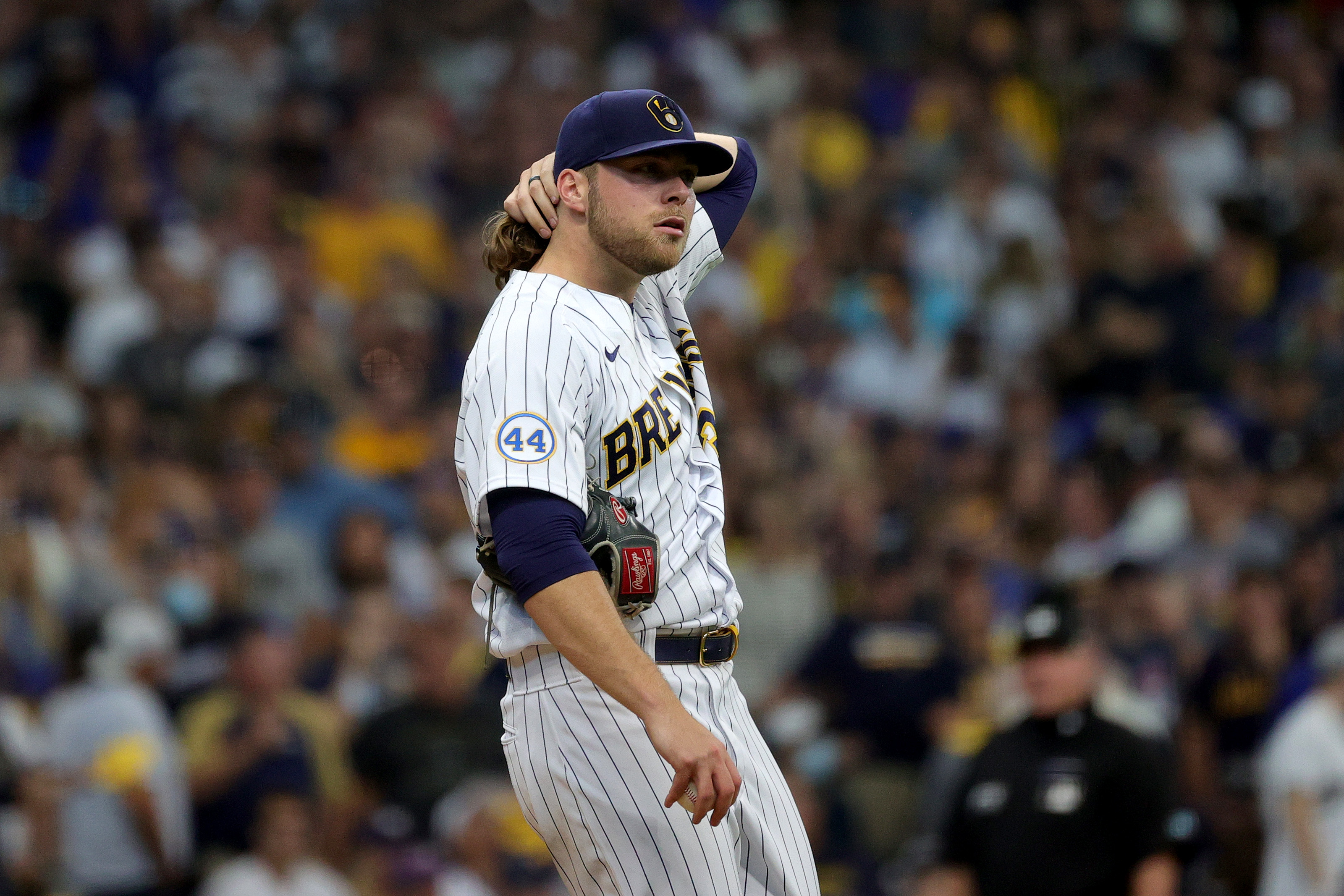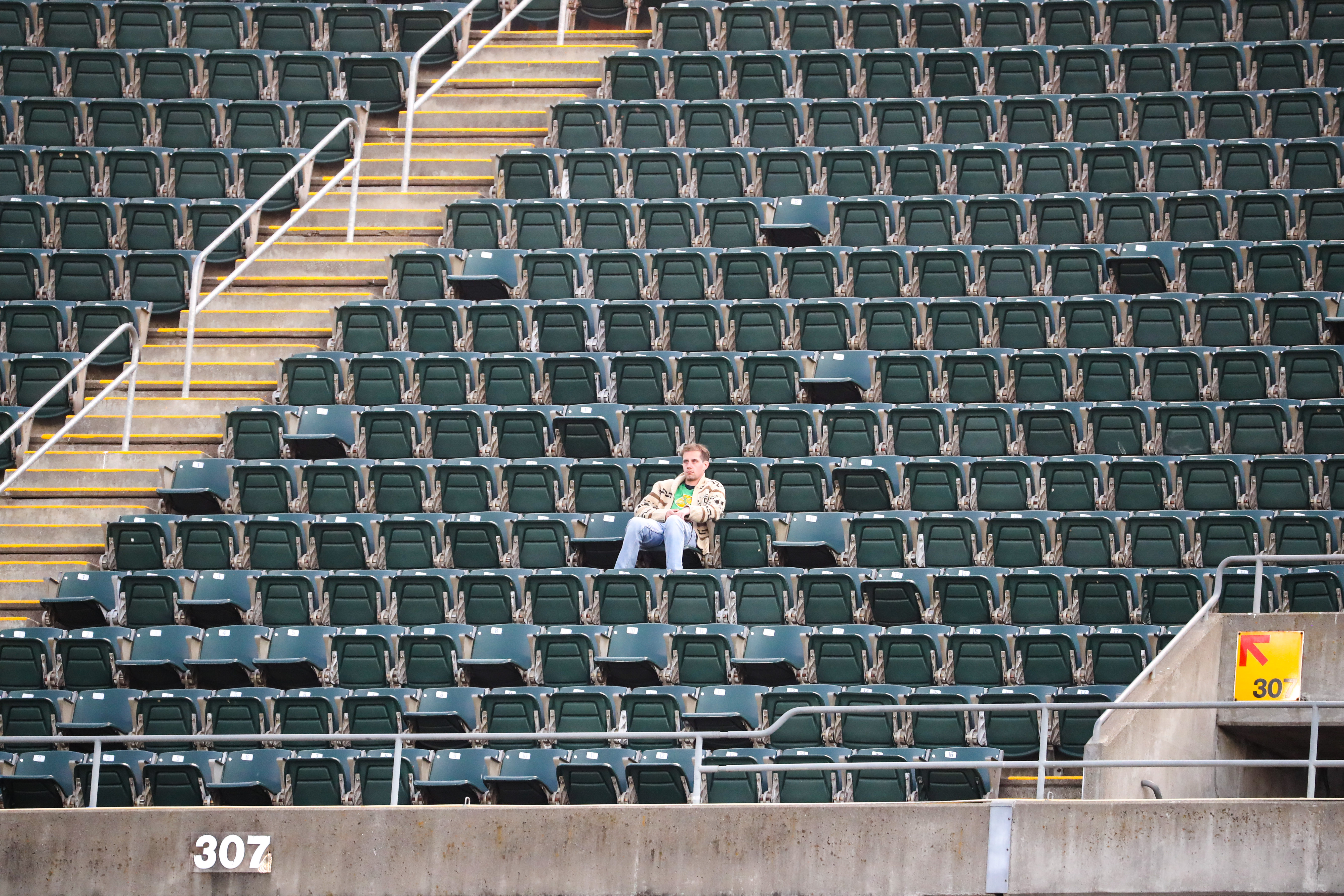Featured Video
Soto Gets Boo’d Again 🗣️

Answering the Crucial MLB Lockout Questions with Spring Training Approaching
Nearly two months have passed since Major League Baseball began its first work stoppage in over a quarter century. Now the start of spring training is looming, as is Opening Day for the 2022 season on March 31.
And yet, MLB and the MLB Players Association don't seem close to a new collective bargaining agreement.
Two sides didn't even engage with one another for weeks after the owners locked out the players on Dec. 2, 2021. The radio silence lasted until Jan. 13, when the league and the union met via Zoom, and the former finally put forth a proposal.
TOP NEWS

MLB Power Rankings at Quarter Mark of the 2025 Season

Jose Alvarado Suspended 80 Games for PED, Ineligible if Phillies Reach MLB Playoffs

Every MLB Team's Mt. Rushmore Since 2000
Though that was only two weeks ago, so much has changed since then that our initial Lockout FAQ needs updating. It's time to answer a fresh round of questions you might have about the negotiations, starting with the obvious one.
Is Spring Training in Jeopardy?
Yes. At least the start of it, anyway.
Pitchers and catchers are due to report to Florida and Arizona in mid-February, with exhibition games slated to start on Feb. 26. So in order to avoid delaying either, MLB and the MLBPA will have to strike a deal in the very near future.
There aren't any hard deadlines, but Mike Axisa of CBSSports.com made good cases for Feb. 1 and Feb. 7 as soft ones. If there's no new CBA by the former, pitchers and catchers likely won't report on time. If not by the latter, the exhibition season will likely get delayed.
Does This Mean I Should Also Be Worried About the Regular Season?
Not yet...but you shouldn't not be worried either.
As much as MLB would surely prefer to have a full slate of spring training games—it's big business, you know—the players could probably get away with three weeks' worth of games. That would be possible if there's a deal by late February or even early March.
While it would stand to reason that neither side wants the negotiations to drag on long enough to put regular-season games in jeopardy, Ben Nicholson-Smith of Sportsnet reported on Monday that the league isn't altogether deterred by that possibility:
Though MLB Commissioner Rob Manfred's office didn't characterize it as such, Evan Drellich of The Athletic reported that some players took this as a threat.
Geez. Is There Any Good News?
Well, sure.
According to Bob Nightengale of USA Today, MLB and the MLBPA have agreed to at least three things. One: The designated hitter will permanently go universal. Two: Top-level free agents will no longer be tied to draft-pick compensation. And three: The playoff field should expand.
Still left to be determined is how much the postseason will grow. The league wants 14 teams. The union wants 12. But either way, the 10-team playoff that (2020 notwithstanding) was the norm from 2012-21 is about to become a relic.
OK, Then. What's Left for the Two Sides to Discuss?
Oh, you know. Just the sport's entire economic system.
It's easy to get cynical—i.e., "millionaires vs. billionaires"—toward how the league and union endeavor to slice up baseball's multi-billion-dollar pie. Yet there is an underdog in this fight. The players always are to a certain extent but especially now as they seek to regain the bigger slices they enjoyed in the late 1990s and early 2000s.
Knowing this, it's extraordinary that the first major concession in the latest round of negotiations actually came from the union.
Oh, Yeah? What Did They Concede?
As Drellich reported, the union is no longer advocating for an age-based free-agency system.
The default timeline to free agency has consisted of six years, split between three in which players are only guaranteed the league minimum and three in which they can appeal for higher salaries via arbitration.
Basically, three years of drastic underpayment followed by three years of more appropriate yet still largely inadequate pay.
Think Corbin Burnes. He made the league minimum in 2021 and is now projected to earn just $4 million via arbitration in 2022, even after capturing the National League Cy Young Award.

The status quo worked well enough when teams were willing to shower big bucks on players once they reached free agency, but that hasn't been the case in recent years.
The free-agent timeline itself has become prone to abuse, and the general reluctance of teams to spend in free agency has left too many players unfairly compensated for their prime years.
So Why Did the Union Concede?
Contrary to the owners, it could be that the players are simply less willing to sacrifice regular-season games.
Those are the games that get them paid, after all. Plus, it was only in 2020 that they lost 102 games worth of paychecks because of the pandemic lockdown. If a large swath of the MLBPA's membership would rather not go through something like that again, well, it's hard to blame them.
Of course, it also helps that some middle ground has emerged.
Oh? How So?
After previously wanting to completely do away with arbitration, the league pivoted to a proposal to eliminate Super Two arbitration—the system that allows a select few players to become arbitration-eligible after two years instead of three—according to Drellich.
As Chelsea Janes of the Washington Post reported, the league has since moved off even that idea in deference to a union proposal to assign pre-arbitration-eligible players performance-based bonuses:
We'll leave it to Baseball Reference creator Sean Forman to explain why tying bonuses to wins above replacement is problematic. But it's not uncommon for veteran players to have awards-based bonuses in their contracts, so that idea at least has merit.
Does That Mean This Is Going To Happen?
It merely means it's a partially sound idea that needs further refining. And if the union really wants this, it may have to accept some version of MLB's idea (as reported by Drellich) to award bonus draft picks to teams that aggressively promote top prospects.
That would just leave the question of how much money would become available to pre-arb players, both before and after potential bonuses. As ESPN's Jeff Passan outlined, it's no small question:
It's noteworthy that MLB's proposal of a $615,000 minimum salary would make for a sizable step up from last year's minimum of $570,500. But as noted by Travis Sawchik of The Score, a bump up to at least $650,000 is needed to account for the rate of inflation since MLB and the MLBPA agreed to the last CBA in Nov. 2016.
So You're Saying There Are Still Big Gaps to Be Closed?
You don't know the half of it.
Hey, You're the One Doing the FAQ. So Please Explain.
The luxury tax, my friend. The luxury tax.
According to Passan, the union wants to raise the luxury tax threshold to $245 million in 2022. That would be a $35 million increase over last year, which itself was only a $15 million increase from where the last CBA started off in 2017.
Loosening the reigns on big-spending teams would presumably make them less skittish about jacking up their payrolls. That would benefit players, particularly if said teams spent more money in free agency.
According to Nightengale, however, the league merely wants to raise the luxury tax threshold to $214 million in 2022. It also wants first-time violators to pay a 50 percent tax on overages and give up a third-round draft pick. Previously, it was a 20 percent tax and no lost draft pick.
Is There Any Middle Ground There?
If there is, it likely involves raising the threshold to somewhere near where the union desires, but the league also getting the harsher penalties that it seeks. That way, there'd be more room for spending on player salaries but also blockades meant to stop runaway payrolls.
What Other Uphill Battles Is the Union Fighting?
Definitely one over revenue sharing.
This is the system that splits local revenues—gate receipts, concessions, local TV dollars, etc.—evenly among all 30 teams. It can amount to a lot of money, as Baseball Reference notes that each team got $118 million from revenue sharing just in 2018.
The union, though, wants to cut revenue sharing significantly. Even in backing off its prior demand for a $100 million reduction, Nightengale reported that the MLBPA still sought a $30 million decrease in Monday's talks.
Nicholson-Smith reported that this was still a no-go for MLB, which prefers to not make any changes to the system.
Wait, Doesn't Revenue Sharing Give Small-Market Teams More Money to Spend on Players?
In theory, yes. In practice, not necessarily.
Though it should be a good thing that the popularity of teams like the New York Yankees and Los Angeles Dodgers means more dollars for, say, the Pittsburgh Pirates, Miami Marlins, Tampa Bay Rays and Oakland Athletics, there aren't any requirements that said dollars go into payroll.

It was only four years ago that the union filed a grievance in relation to revenue-sharing abuse, so it's little wonder that it's taken its fight to the CBA talks. In their ideal world, winning this fight would put a stop to teams willingly fielding bad and cheap teams. Because in lieu of simply collecting other teams' dollars, they'd have to go and earn their own.
By Doing What?
Hypothetically, by fielding teams that people actually want to see. If not a winning team, then at least one with stars who put butts in seats.
Sounds Like an Anti-Tanking Measure.
Indeed. But even if the union doesn't get its wish with revenue sharing—and it probably won't—it and the league are working on at least one other way to address tanking.
And That Is?
A draft lottery.
The draft order has historically been decided by records, with the worst team from the previous season at the top and the best team on the bottom.
It used to be that getting the No. 1 pick wasn't necessarily worth all the losing, but that's changed as more and more teams have sought to build around homegrown stars. Now that No. 1 pick is worth all the losing.
As such, both the league and the union seem ready to take a page from the NBA. They just need to agree on what form a lottery would take.
Per Passan, the MLBPA wants a lottery that covers the top eight picks. The league wants it to only cover the top three, with a further stipulation that a team can't be eligible for the lottery more than three years in a row.
Seems Workable. Are There Any Other Draft-Related Talks Going On?
Well, there is talk of an international draft that would replace the annual signing period for international amateurs. It's something the league has wanted for a while now and still wants, according to Passan and ESPN colleague Jesse Rogers.
Is That a Good Idea?
Frankly, whether any draft is a good idea is debatable.
The familiar argument goes that distributing amateur talent in such a way is good for competitive balance. Others, such as Sawchik, will argue that it artificially suppresses amateur players' negotating leverage and, in turn, their signing bonuses.
That said, Maria Torres and Ken Rosenthal of The Athletic recently published an article that covers how corrupt and generally broken MLB's international signing system has become. Problematic as the concept may be, even a draft might be preferable to the status quo.
What Else Needs to Be Figured Out?
Oh, a whole bunch of stuff. Including potential on-the-field changes, such as a pitch clock, yet another new ball and an automated strike zone.
If you're of the mind that this is the stuff that really matters, well, you're not alone there. Not to get all "baseball is dying," but in recent years, it's become impossible to ignore how much the game needs a quality-of-life facelift. Above all, shorter and faster-paced games are a must.
By putting all this on the backburner, Brittany Ghiroli of The Athletic said it well in writing that baseball is "operating as if its fanbase is bulletproof." That needs to change, lest the next CBA not include any olive branches to fans whose loyalty to the sport may be cracking.
Thanks. I Was Looking for a Reason to be Pessimistic Today.
You're welcome.
So What's Your Hunch on When This Thing Ends?
Oof. How does "not soon" work for you?
Sounds Like a Copout.
That's fair. All the same, don't hold your breath.
What Should I Do Then?
Just cross your fingers.






